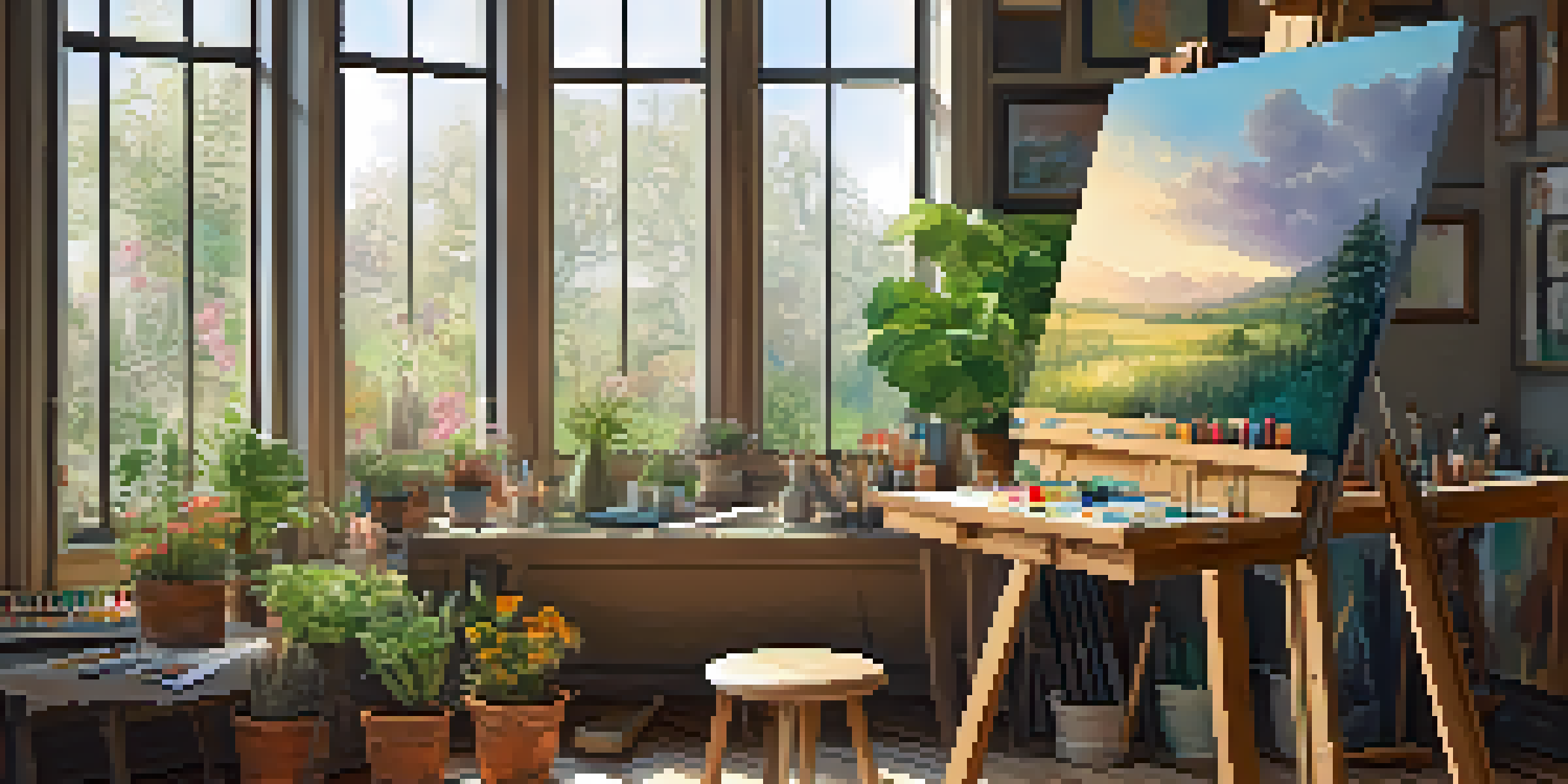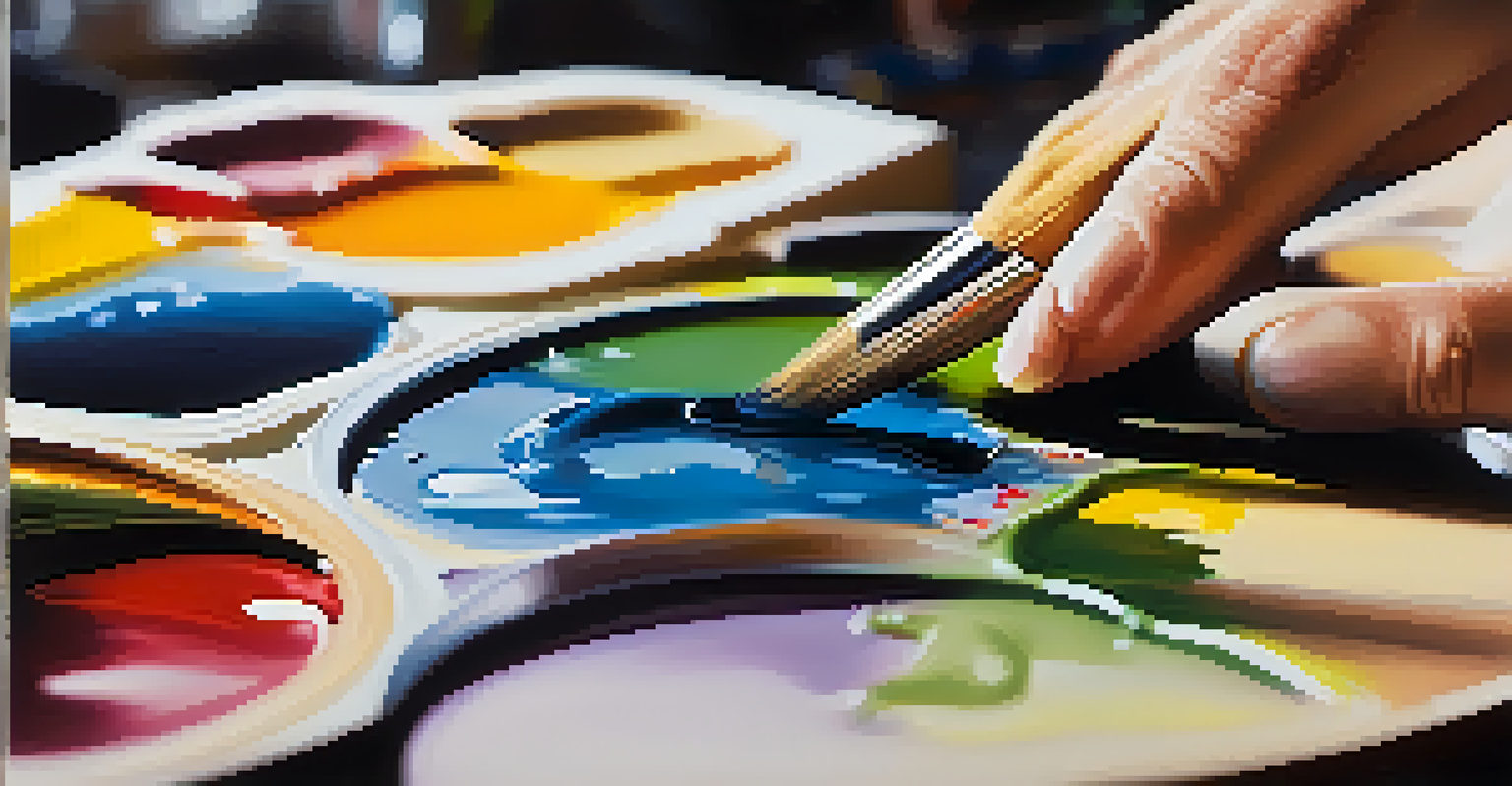Critique as a Tool for Growth in Aspiring Painters’ Careers

Understanding the Importance of Critique in Art
Critique is an essential part of any artist's journey, particularly for aspiring painters. It allows artists to receive feedback on their work, which can illuminate strengths and weaknesses that may not be apparent in isolation. By embracing critique, painters can open themselves up to new perspectives and insights that can fuel their creative growth.
Criticism, like rain, should be gentle enough to nourish a man's growth without destroying his roots.
Additionally, critique serves as a mirror, reflecting back what resonates with viewers and what doesn't. This feedback loop is crucial for artists who seek to evolve their style and technique over time. Ultimately, understanding the importance of critique sets the foundation for a successful artistic career.
In the world of painting, where personal expression meets technical skill, criticism can be the catalyst for breakthroughs. It pushes artists to explore uncharted territories in their work, leading to innovation and fresh ideas.
Finding the Right Critics: Who to Trust
Not all feedback is created equal, and finding the right critics is vital for meaningful growth. Look for individuals who have a genuine understanding of art—whether they're fellow artists, mentors, or art educators. These critics can provide valuable insights that are both constructive and encouraging.

It's also important to consider the perspectives of your audience. Engaging with those who are part of the art community can provide a well-rounded view of how your work is perceived. Remember, the goal is to gather diverse opinions while filtering out negativity that doesn’t contribute to your growth.
Embrace Critique for Growth
Receiving critique helps artists identify strengths and weaknesses, fostering creative development.
As you build relationships with trustworthy critics, you'll find that their feedback becomes a powerful tool. They can help you refine your work and challenge you to push your boundaries, ultimately leading to a more fulfilling artistic journey.
Differentiating Between Constructive and Destructive Critique
Understanding the difference between constructive and destructive critique is crucial for any artist. Constructive critique is aimed at helping you improve, often providing specific suggestions and positive reinforcement. On the other hand, destructive critique tends to focus on personal attacks or vague comments that can be demoralizing.
What we learn from experience depends on the experience we have. Feedback is the fuel that drives improvement.
Recognizing this distinction allows you to filter feedback effectively. When receiving critique, ask yourself whether the comments are actionable and respectful. Constructive feedback can be uncomfortable at times, but it often leads to the most significant growth.
By embracing constructive critique while dismissing destructive comments, you can create a healthier mindset around receiving feedback. This positive approach can transform how you view criticism and use it to fuel your artistic journey.
The Role of Self-Reflection in Receiving Critique
Self-reflection is an integral part of processing critique effectively. After receiving feedback, take the time to consider your emotional response and the validity of the comments. This reflective practice can help you distinguish which critiques resonate and which may not apply to your work.
Journaling can be a great way to capture your thoughts and feelings about the feedback received. This practice allows you to document your growth over time and track how your art evolves in response to critique. Understanding your emotional triggers can also help you approach future critique sessions with a clear mind.
Choose Your Critics Wisely
Finding trustworthy critics who provide constructive feedback is essential for meaningful artistic improvement.
By incorporating self-reflection into your artistic process, you create a balanced approach to critique. This balance enables you to absorb constructive feedback while remaining true to your artistic vision.
Creating a Supportive Critique Environment
Building a supportive critique environment can significantly impact how you receive feedback. Consider forming a critique group with fellow artists who share similar goals and values. In a safe space, artists can discuss their work openly, fostering camaraderie and encouraging honest discussions.
Make it a practice to establish ground rules that promote respect and constructive feedback. This can include focusing on the art rather than the artist, ensuring that comments are specific, and encouraging positive reinforcement. When everyone feels safe to share, the critique becomes a collaborative and enriching experience.
A supportive environment not only enhances the quality of feedback but also builds lasting relationships with fellow artists. This sense of community can be incredibly motivating, reminding you that you’re not alone on your artistic journey.
Applying Feedback: Turning Critique into Action
Once you’ve received critique, the next step is to turn that feedback into actionable changes. Select the most relevant comments and prioritize them based on your artistic goals. This focused approach ensures that you’re making improvements that resonate with your vision as an artist.
Experimenting with the feedback is essential. Try incorporating specific suggestions into your next piece, allowing yourself to explore new techniques and ideas. Remember, the goal isn’t to please everyone, but to enhance your craft in a way that feels authentic to you.
Transform Feedback into Action
Applying relevant critiques actively leads to continuous improvement and enhances your artistic expression.
By actively applying feedback, you create a cycle of continuous improvement. Each new piece becomes an opportunity to refine your skills and expand your artistic expression, ultimately leading to a more fulfilling painting career.
Celebrating Your Growth Through Critique
As you navigate the world of critique, it’s important to celebrate your growth along the way. Acknowledging the progress you’ve made, both in response to feedback and through your own efforts, helps reinforce your commitment to your craft. Take time to reflect on how critique has shaped your artistic journey.
Consider creating a visual timeline of your work to see how your skills have evolved over time. This can serve as a powerful reminder of what you’ve accomplished and the value of embracing critique. Celebrating milestones—big and small—will motivate you to keep pushing forward.

Remember, every artist’s journey is unique, and growth is a continuous process. By celebrating your achievements and remaining open to critique, you can cultivate a thriving and rewarding painting career.